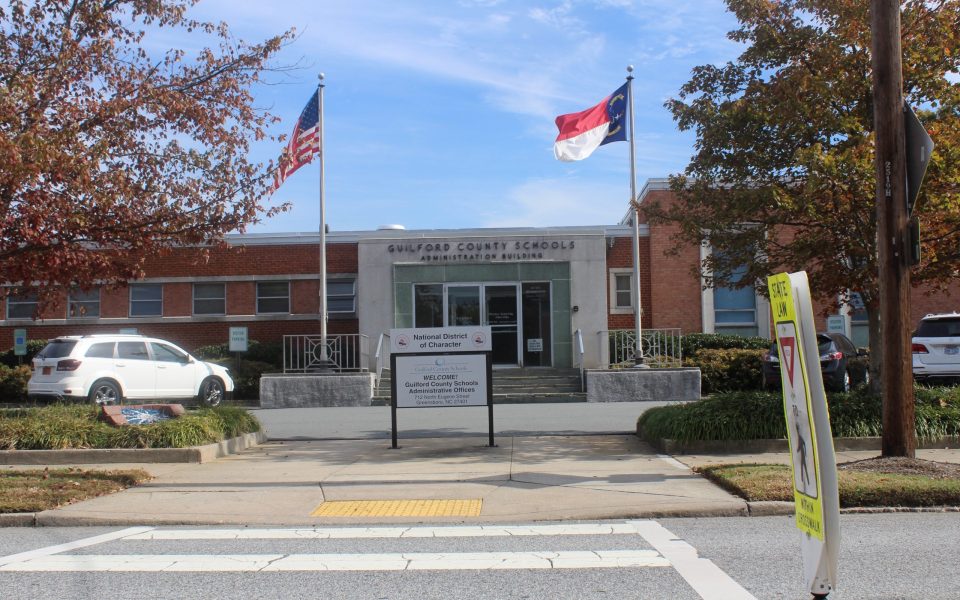During recent school board work sessions and meetings, staff with Guilford County Schools shared closure plans for four schools and construction progress for 22 schools and one transportation facility.
Funding comes from $2 billion in bonds that were passed by voters in 2019 and 2022.
As Triad City Beat has reported, Guilford County Schools is the third-largest school district in the state and has had a number of problems with aging buildings including HVAC issues and mold. In 2019, a comprehensive look at the district’s buildings found that schools that serve minority student populations had some of the worst problems. Now, four years later, some of the projects that aim to fix the issues are making progress.
For those that want to follow along on the progress, check out the school district’s bond track here. Read the full progress report here.
Here’s a quick look at how the projects are going. A public hearing on the proposed changes will be held on Dec. 12.
Schools scheduled to be closed
During the Nov. 14 school board meeting, district officials unveiled plans to close at least three schools and turn one into a Montessori school. According to the plans, Wiley Elementary School, Murphey Traditional Academy and Swann Middle School are scheduled to close while Archer Elementary School would be reopened as a Montessori school. Wiley Elementary will be reopened as Erwin Montessori.
According to the district’s plans, elementary school students would be reassigned to Peck and Foust while middle school students would be reassigned to Mendenhall and Kiser.


Schools in the construction phase

Claxton Elementary School
- Project estimate: $50.4 million (32 percent spent)
- 37 percent complete
Peck K-8 Expeditionary School
- 27 percent complete
- Project estimate: $78.7 million (27 percent spent)
- Estimated opening: January 2025
Foust Elementary School
- 16 percent complete
- Project estimate: $59.1 million (18 percent spent)
- Estimated opening: January 2025
Brooks Global Elementary School
- 16 percent complete
- Project estimate: $42.6 million (16 percent spent)
Kiser Middle School
- 11 percent complete
- Project estimate: $81.7 million (13 percent spent)
Schools in the programming or planning phase
According to the district, “planning is the process that the design process utilizes in establishing some of the basic principles and criteria for the project.”
“There is a need to discuss, weigh, understand all the requirements of the project at the same time the site is being analyzed specific to the soils, region, climate, and local authority requirements,” according to the district. “This allows for the location of the building to be determined in relation to the other site appurtenances that include but are not limited to parking, activity fields, vehicle/ bus routes, site access, and roadway/ intersection impacts.”
On the other hand, programming is “the process of establishing spatial relationships, quantities and sizes within the building. As a school district, all the criteria specific to the project must be established and based on past, present, and forecasted information such as student population, grades, type (ES, MS, K8, HS), curriculum focus, and other state recommended/ required criteria.”
Schools in the planning phase:
- Swann 6-12
- Northwood Elementary School
- Shadybrook Elementary School
- Joyner Elementary School
- Vandalia Elementary School
- Bessemer Elementary School
- Millis Road Elementary School
Schools in the programming phase:
- Montessori @ Archer Elementary School
- Sternberger Elementary School
- Allen Jay Elementary School
- Sumner Elementary School
- Lindley K-5
Join the First Amendment Society, a membership that goes directly to funding TCB‘s newsroom.
We believe that reporting can save the world.
The TCB First Amendment Society recognizes the vital role of a free, unfettered press with a bundling of local experiences designed to build community, and unique engagements with our newsroom that will help you understand, and shape, local journalism’s critical role in uplifting the people in our cities.
All revenue goes directly into the newsroom as reporters’ salaries and freelance commissions.


Leave a Reply